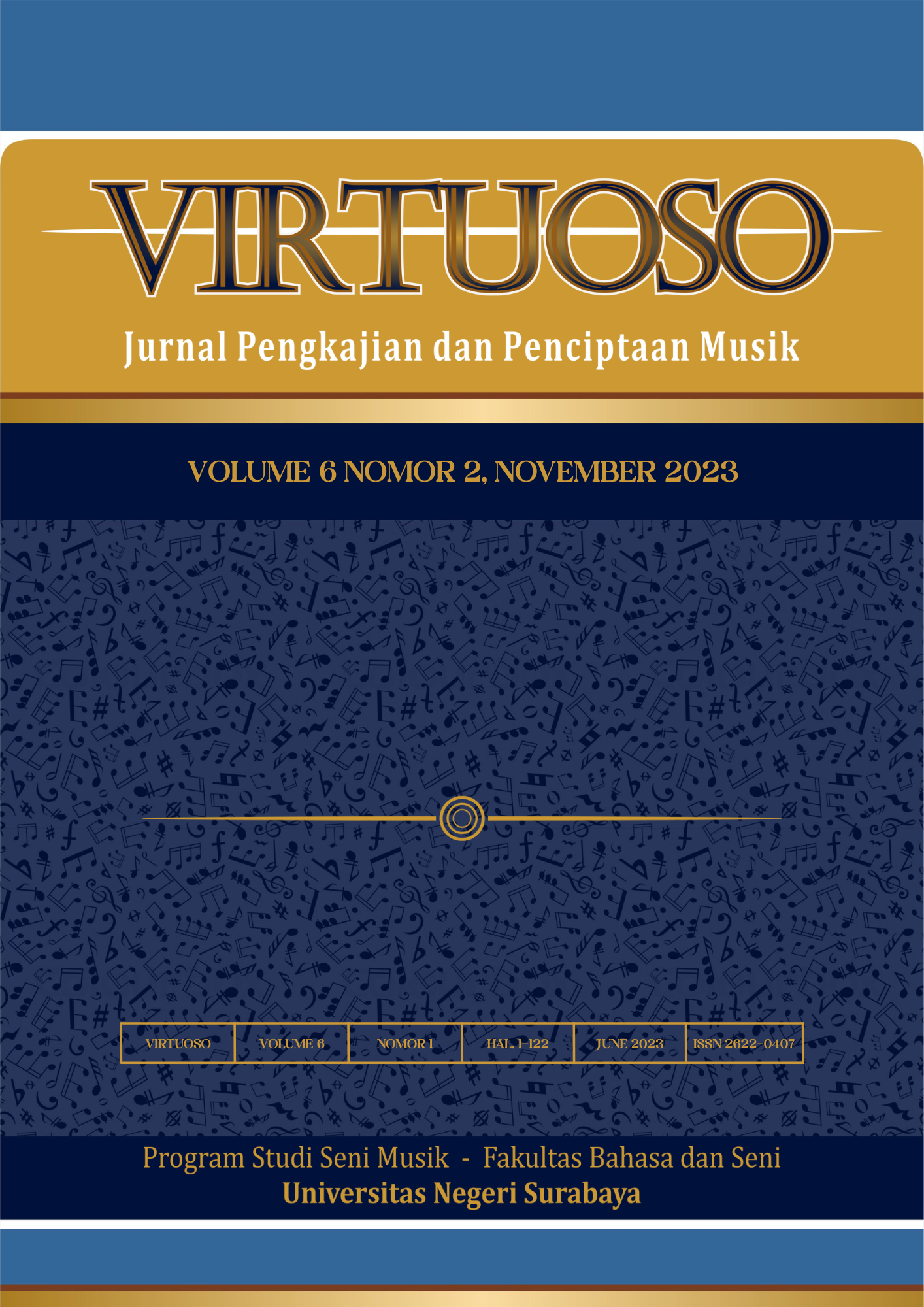Innovation in Environmentally Friendly Materials: Making Paralon Soprano Alto Tenor Bass (SATB) Musical Instruments
Main Article Content
Abstract
This study seeks to explore the paralon's ability to make musical instruments. Paralon is a material that is strong against weather changes. The novelty of this research is in the form of the soprano, alto, tenor, and bass (SATB) paralon musical instrument. For this reason, researchers describe and explore the tool step by step until its presentation. The purpose of this study was to find innovations in making musical instruments from paralon. This study uses a qualitative method along with exploration. Data were collected through observation, interviews, and literature studies as reference materials related to this research. Observations were carried out by researchers by observing the making of the SATB paralon musical instrument, measuring the parts of the paralon, and taking notes. Exploration of the internet for literature to add insight about the object to be studied. The stages of making the SATB paralon musical instrument begin with finding the raw materials to be used. After all the raw materials are obtained, the paralon pipe is cut and shaped according to the design that the researcher made. Followed by installing a knife at the end of the paralon. After gluing, the process of finding the tone (tuning) of the paralon pipe begins. The table is needed to place the SATB paralon musical instrument, which is made and shaped according to the SATB paralon musical instrument.
Downloads
Article Details

This work is licensed under a Creative Commons Attribution-NonCommercial-ShareAlike 4.0 International License.
The copyright of the received article once accepted for publication shall be assigned to the journal as the publisher of the journal. The intended copyright includes the right to publish the article in various forms (including reprints). The journal maintains the publishing rights to the published articles.
References
Albab, Mohammad Ulil. (2016). Supriyono, Legend of the Paralon Flute from Tanah Using. Retieved from: https://m.merdeka.com/banyuwangi/profil/supriyono-legenda-seruling-paralon-dari-tanah-using-1603162.html.
Gaol, Agustinus Lumban. (2016). Making Sulim from Paralon Pipe Material A Special Study of Sulim Paralon Pipe Made by Mr. Rudi Hambali Limbong Medan State University.
Hawkins, A.M. (1988). Creating Through Dance, Revised Edition. New Jersey: Princeton Book Co.
Munna, Khoerul. (2018). Arus. Indonesian Art Institute Surakarta.
Prayitno, Sidik Eleng. (2016). Nggrejih. Indonesian Art Institute Surakarta.
Phetorant, D. (2020). The Role of Music in Film Scores. Journal of Music Science, Technology, and Industry, 3(1), 91-102. https://doi.org/10.31091/jomsti.v3i1.967
Santoso, I. B., Kiswanto, & Setiawan, Y. B. (2022). Imitation Form of Dangdut Kendang on the Ketipung Paralon Instrument. Gondang: Jurnal Seni dan Budaya, 6 (1): 245-253
Setiawan, Yusuf Beny. (2019). Organology and Beating Patterns of the Ketipung Paralon Instrument Indonesian Art Institute, Surakarta.
Setyawan, D. (2019). Recycle: From Trash to Sound (Study of the Music Creation of the Trash Wayang Group in Surakarta) Indonesian Art Institute, Surakarta.
Siregar, Tuison. (2012). Utilization of Paralon Pipes in Making Taganing Musical Instruments at the Aritonang Music Studio on JL. Shrimp Net 1 Medan Labuhan District Medan State University.
Sugiyono. 2017. Quantitative, qualitative, and R&D research methods. Bandung: Alphabeta.
Zhou, Kai (2018). What cognitive neuroscience tells us about creativity education: A literature review. Global Education Review, 5(1), 20-34.

